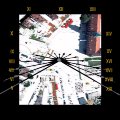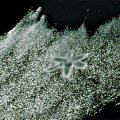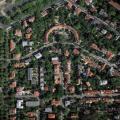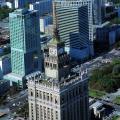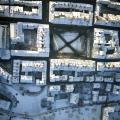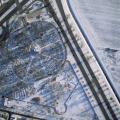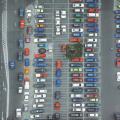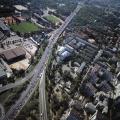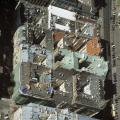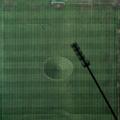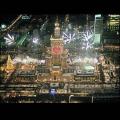samper@samper.pl
THE ART OF SYNTHESIS
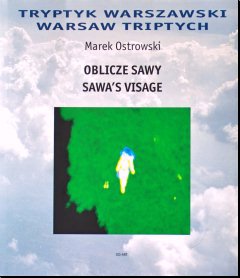
Through the books Wars’s Gaze and The Visage of Sawa – the first containing a dynamic view and the other a reflective image – I would like to acquaint the reader with the city space from an aerial perspective, a source of information simultaneously bringing together two concepts associated with the interpretation of imagery: deduction and induction. Sawa does not compete with Wars. They have distinct points of view and different perspectives, but their visions are complementary.
The Visage of Sawa is an attempt to create an image of the spatial structure of the greater city, and of the general principles that govern space, on the basis of the little bits and details that one comes across everyday. Sawa, as a woman, has the necessary predisposition to notice details and to synthesise them charmingly into one image. In spite of the fact that an aerial picture, by its very nature, covers a wide space, in this book the aerial pictures will not form the basis for drawing specific conclusions from general premises, but rather the opposite: a detail will either be the point of departure for creating an image of the city, or will be added to other details already present in our memory. For this very reason, the narrative in this album has taken the form of a walk along avenues that spontaneously emerge out of incidental events, places, structures, and people encountered along the way. From these sometimes chaotic and random experiences and observations we can form an image of the city – our image of one of the city’s many faces.
One can only see the city as a whole by adopting Wars’position, from the outside. From the position adopted by Sawa – who is firmly placed within – one can only imagine the whole from individual details.
Rational conclusions often draw upon intuition – a form of non-verbal intelligence. The processing of information perceived intuitively takes place in the oldest – in terms of evolution –portions of the brain, often unconsciously. And yet, intuition rectifies and verifies our rational and conscious thinking.
One of the natural mechanisms for synthesising and generalising information, imbedded deeply in our molecular structures, is the process of image formation. The image is one of the most effective information synthesizing systems known to nature. The creation of a picture of the city from remembered details is precisely such a synthesis-shaping process, taking place step by step.
A general principle does not have to be a universal one. Is the sharpness of our brain, its ability to archive data by the millions or billions, and its efficiency of generalisation – which is necessary for synthesis – sufficient to shape an image of the city by induction: an image obtained in kind, through the senses, in one glance, instead of through a boring collection and synthesis of data?
Perhaps the reaching of conclusions by means of induction is merely the ascertainment of a degree of probability, of the possibilities and directions of change, for example? In this case reaching conclusions by means of deduction and induction would rather concern temporal relations: reading from the past and predicting the future.
The aerial pictures in this book – an optical synthesis of information on space – are, at the same time, a search for identity through direct image analysis, as well as through a confrontation with intuition and with knowledge and experience gained from our ‘earthly’ perspective.
I hope the reader, inspired by these images, will join in this adventure of creating a picture of the city and will embark on a journey that might just turn out to be a dream voyage. After all, our sensual seeing ‘at a glance,’ our seeing in images, is precisely a synthesis of conclusions arrived at inductively: a synthesis inspiring us to discover and generalise.
Aside from all this, The Visage of Sawa is a simple book about Warsaw, a walk through its streets and a peek into its nooks and crannies.
samper@samper.pl
mobile (+48) 602 760031
